“Global Generative Design Market to reach a market value of 938.9 Million by 2031 growing at a CAGR of 19.8%”
The Global Generative Design Market size is expected to reach $938.9 million by 2031, rising at a market growth of 19.8% CAGR during the forecast period.
Safety and reliability are paramount in aerospace and defense applications. Generative design helps ensure that components are robust and reliable by optimizing structural integrity and performance under various operating conditions. Hence, the aerospace and defense segment held more than 1/4th revenue share in the market in 2023. Generative design facilitates the use of advanced materials and composites often required in aerospace and defense. These materials can be optimized for specific applications, resulting in improved performance and reduced material costs.
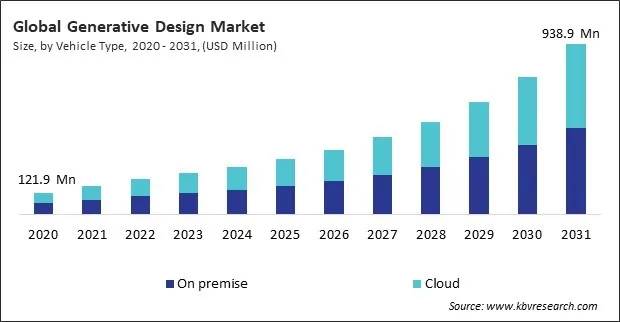
The major strategies followed by the market participants are Product Launches as the key developmental strategy to keep pace with the changing demands of end users. For instance, In November, 2023, Autodesk, Inc. unveiled Autodesk AI, designed to enhance creativity, tackle challenges, and reduce unproductive tasks across various industries. Furthermore, In May, 2024, PTC, Inc. unveiled Creo 11 and Creo+ SaaS CAD solutions, aiming to accelerate design and improve electrification, composites, model-based definition, simulation-driven design, and manufacturing.
Based on the Analysis presented in the KBV Cardinal matrix; Siemens AG is the forerunner in the Generative Design Market. In June, 2024, Siemens AG unveiled AI tools to enhance hydrogen production plant design, accelerating scalability. Their new hydrogen plant configurator includes a generative AI chatbot that generates flow diagrams and precise layouts based on design specifications. Companies such as Dassault Systemes SE Autodesk, Inc., Hexagon AB are some of the key innovators in Generative Design Market.
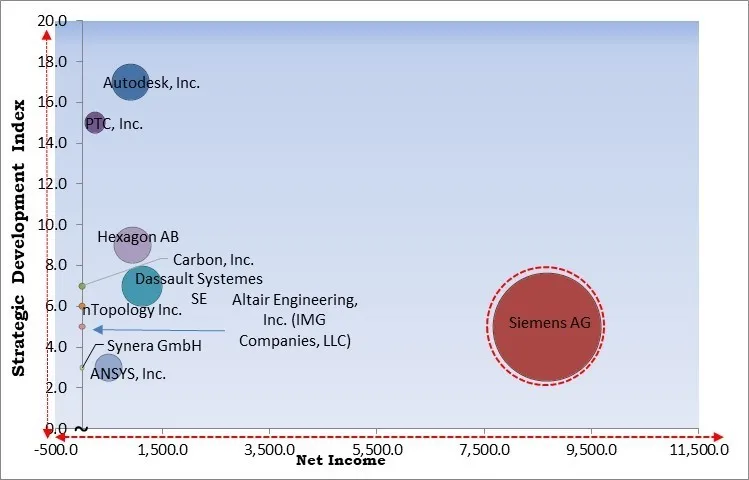
Companies face intense competition to bring products to market quickly. Generative design speeds up the design process by automating the creation of multiple design alternatives and optimizing them for specific criteria. This reduces the time needed to iterate and refine designs, allowing companies to launch products faster. Generative design minimizes this by quickly generating and evaluating numerous design options. This efficiency can significantly reduce development costs by identifying the most effective designs early. Thus, rising demand for efficient product development drives the market's growth.
AI and ML algorithms can autonomously generate design options based on predefined parameters and constraints. These algorithms can analyze and evaluate numerous design possibilities faster than manual methods, leading to more diverse and optimized solutions. AI-driven generative design tools use optimization algorithms to evaluate the performance of various design iterations. They can explore unconventional solutions and optimize designs in ways that might not be intuitive or feasible using traditional methods. Therefore, artificial intelligence and machine learning advancements propel the market's growth.
Generative design involves the creation and manipulation of proprietary design data. Companies are concerned about the risk of intellectual property (IP) theft or unauthorized access to their sensitive design information, especially when using cloud-based solutions. Cloud-based generative design tools store sensitive data online, making them susceptible to breaches and cyberattacks. The potential for unauthorized access to confidential design data raises significant security concerns for companies. Companies must implement comprehensive security protocols, which can be resource-intensive and add to operational overhead. Thus, data security and privacy concerns are impeding the market's growth.
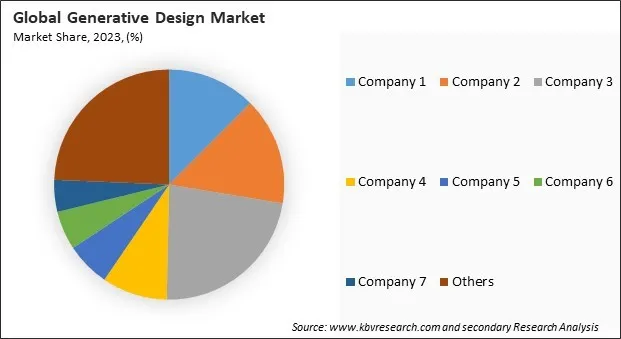
The leading players in the market are competing with diverse innovative offerings to remain competitive in the market. The above illustration shows the percentage of revenue shared by some of the leading companies in the market. The leading players of the market are adopting various strategies in order to cater demand coming from the different industries. The key developmental strategies in the market are Product Launches and Product Expansions.


Based on deployment, the market is divided into on premise and cloud. In 2023, the on premise segment garnered 53% revenue share in the market. Generative design processes often involve proprietary and sensitive design data. On-premises solutions offer enhanced data security and privacy control, minimizing the risk of unauthorized access and data breaches.
On the basis of industry, the market is segmented into automotive, industrial manufacturing, aerospace & defense, architecture & construction, and others. In 2023, the industrial manufacturing segment attained 23% revenue share in the market. Generative design speeds up prototyping by rapidly generating and evaluating multiple design options. This accelerates product development cycles, allowing manufacturers to bring new products to market faster. Generative design provides the flexibility to create customized solutions tailored to specific manufacturing needs.
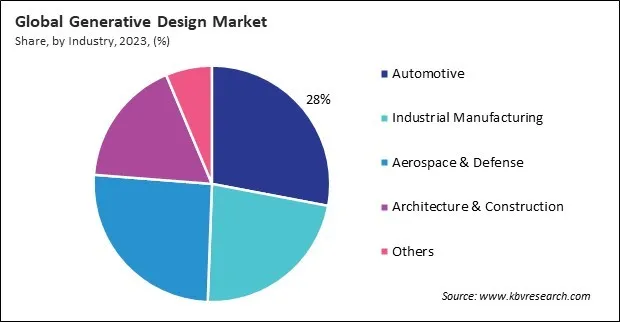
By application, the market is divided into topology optimization & 3D printing, lightweighting, thermal management, and others. In 2023, the topology optimization & 3D printing segment registered 43% revenue share in the market. Generative design excels in topology optimization by generating structures that use material only where needed, based on performance criteria. This results in lightweight yet strong components, ideal for applications where material efficiency is crucial.
Free Valuable Insights: Global Generative Design Market size to reach USD 938.9 Million by 2031
Region-wise, the market is analyzed across North America, Europe, Asia Pacific, and LAMEA. The North America region witnessed the 39% revenue share in the market in 2023. North America, particularly the United States and Canada, is known for its advanced manufacturing infrastructure and technological innovation. This strongly focuses on integrating cutting-edge technologies such as generative design into manufacturing processes.
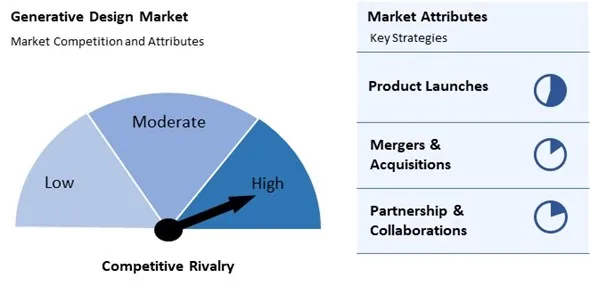
The Generative Design market is highly competitive, with leading companies like Autodesk and Dassault Systèmes dominating. Competition is fueled by rapid technological advancements, increasing adoption across industries, and the push for innovation in design processes. New entrants focus on specialized applications and niche markets to differentiate themselves.
| Report Attribute | Details |
|---|---|
| Market size value in 2023 | USD 231.2 Million |
| Market size forecast in 2031 | USD 938.9 Million |
| Base Year | 2023 |
| Historical Period | 2020 to 2022 |
| Forecast Period | 2024 to 2031 |
| Revenue Growth Rate | CAGR of 19.8% from 2024 to 2031 |
| Number of Pages | 274 |
| Number of Tables | 373 |
| Report coverage | Market Trends, Revenue Estimation and Forecast, Segmentation Analysis, Regional and Country Breakdown, Competitive Landscape, Market Share Analysis, Porter’s 5 Forces Analysis, Company Profiling, Companies Strategic Developments, SWOT Analysis, Winning Imperatives |
| Segments covered | Deployment, Industry, Application, Region |
| Country scope |
|
| Companies Included | PTC, Inc., Dassault Systemes SE, Autodesk, Inc., Siemens AG, ANSYS, Inc., nTopology Inc., Hexagon AB, Altair Engineering, Inc. (IMG Companies, LLC), Carbon, Inc., Synera GmbH |
By Deployment
By Industry
By Application
By Geography
This Market size is expected to reach $938.9 million by 2031.
Rising Demand for Efficient Product Development are driving the Market in coming years, however, High Cost of Generative Design Software restraints the growth of the Market.
PTC, Inc., Dassault Systemes SE, Autodesk, Inc., Siemens AG, ANSYS, Inc., nTopology Inc., Hexagon AB, Altair Engineering, Inc. (IMG Companies, LLC), Carbon, Inc., Synera GmbH
The expected CAGR of this Market is 19.8% from 2024 to 2031.
The Automotive segment is leading the Market by Industry in 2023; thereby, achieving a market value of $230.8 million by 2031.
The North America region dominated the Market by Region in 2023, and would continue to be a dominant market till 2031; thereby, achieving a market value of $351 million by 2031.
Our team of dedicated experts can provide you with attractive expansion opportunities for your business.
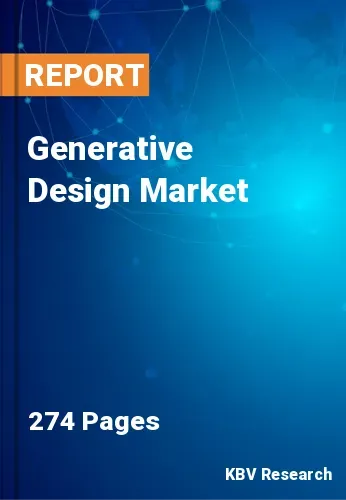
 Drivers
Drivers
 Restraints
Restraints
 Opportunities
Opportunities
 Challenges
Challenges
